"IT'S A GREAT DAY TO BE A BALER”




"IT'S A GREAT DAY TO BE A BALER”



AUGUST 8, 2023


















 John Corrigan President
Patty Nehme Clerk
Steve DeLay Trustee
Juan Robledo Trustee
Miguel Sahagun Trustee Dr. Shawn Tennenbaum Superintendent
John Corrigan President
Patty Nehme Clerk
Steve DeLay Trustee
Juan Robledo Trustee
Miguel Sahagun Trustee Dr. Shawn Tennenbaum Superintendent




The mission of San Benito High School District is to educate all students to their highest potential so they will have the greatest range of personal options upon graduation.

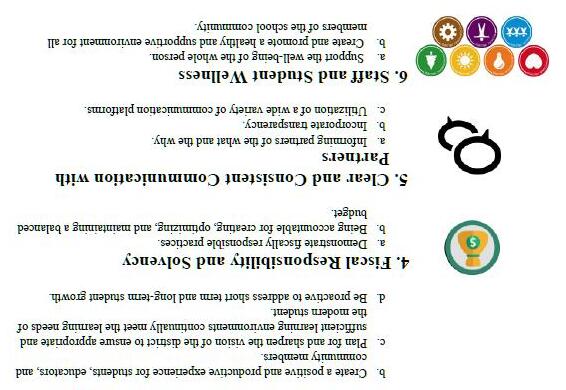




As the educational center of our community, Hollister High School provides: a safe, orderly and supportive environment which offers challenging and equitable opportunities for all students







fosters academic achievement of all students while developing vocational and interpersonal skills required for success in rapidly changing technological world instills a strong work ethic and respect for the community effort while preparing students for active and productive roles in society as adults promotes individual dignity, integrity, and respect for diversity.

TOGETHER WE CAN, TOGETHER WE WILL, BUILDA BRIGHTER FUTURE

Facility Master Planning is essential in preparing for the long-term capital needs of a school district and to identify improvements needed to adequately serve the anticipated student population within a school district’s boundaries over the next 10 to 15 years. A Facility Master Plan (FMP) provides the district with information regarding current and future needs for student housing, quality of facilities, and facilities renovation or expansion requirements to support educational and programmatic goals. FMPs are created to identify specific capital needs, provide data to support the needs identified, and provide a plan for how to address the needs.
The FMP should be a flexible document that can be revisited and updated periodically to serve as the framework for the construction of facilities necessary to serve an evolving district.
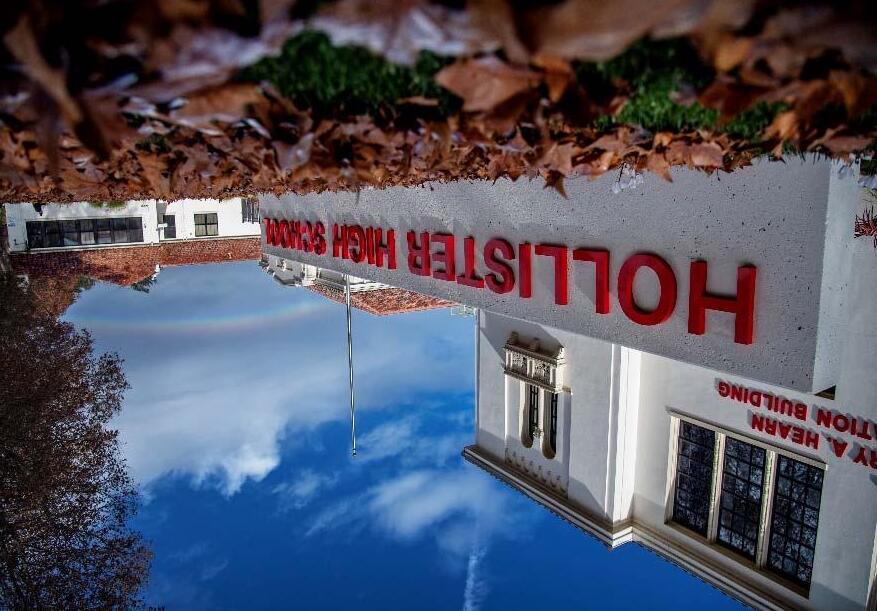
The San Benito High School District (the District) has a successful history of facilities planning and implementation. The Board of Trustees approved FMPs in 2015, 2017, 2020, and 2022. The District’s focus on long term facilities master planning has enabled the District to complete 27 major school facility projects as shown in Appendix A. The District is grateful to the community for enabling it to complete these projects in a fiscally responsible and sustainable manner.
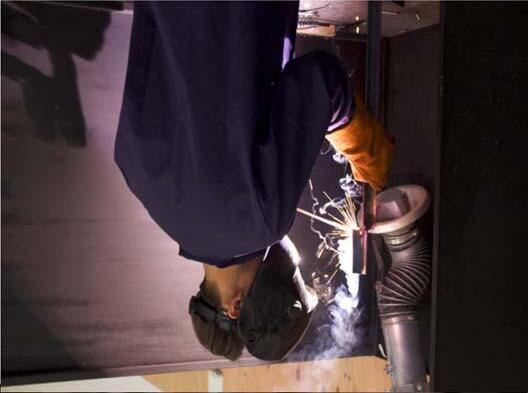
The Board of Trustees is committed to delivering superior educational programs in a safe, clean, and enjoyable learning environment. A second high school is essential to the continued delivery of high-quality educational opportunities. The purpose of this FMP is to incorporate extensive community input obtained through the 2022-23 Facilities Needs Committee and further define the community’s vision for a second high school.





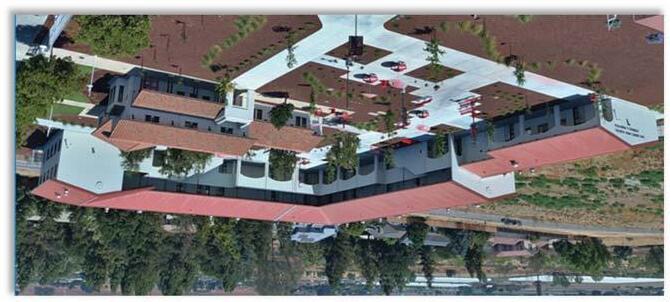
Hollister High School, formerly San Benito High School, is the flagship campus of the District. Located in Hollister, California, the original school started in 1895 in a tiny grammar school building on San Benito Street. Growth and attendance were slow and after 6 years only 57 students graduated. As Hollister grew, so did attendance. A new school building was opened in 1909, which was now the administration building.
Growth continued and the O’Donnell Gym and Davis Library were added. But tragedy struck in 1955, when fire consumed most of the school, only leaving behind the administration offices. Hollister High School is still expanding and improving and has increased its size to a current capacity for over 3,400 students in grades 9-12.
The list of awards and recognitions received by the High School is long, but features exemplary notations such as:
Included in the US News & World Report list of Best High Schools for four years running – 2019, 2020, 2021, and 2022

Recognized, four years in a row, by Special Olympics as a Unified Champion School based on Whole System Engagement, Inclusive Youth Leadership, and Inclusive Sports, Circle of Friends Schools and Colleges
Educational Results Partnership School Honor Roll three years in a row 2017-18 through 2019-20
Recognized on the College Board 10th Annual AP District Honor Roll
Received 6-year WASC Accreditation – Western Association of Schools and Colleges

Voted Best Public School in San Benito County
2023 California Department of Education Green Ribbon School





The District has experienced great success in the utilization of the bond dollars that were approved by District voters with Measure G in 2014 and Measure U in 2016. Extensive campus improvements and infrastructure upgrades have been completed, in addition to new learning environments and PE/athletic areas.

A comprehensive process was followed to determine the capital needs set forth in the original 2015 FMP. Specifically, a Facilities Needs Assessment Survey was completed by the architectural team in conjunction with District staff. Such needs were reviewed by key educational partners during Master Planning sessions. These findings were the basis for the Measures G and U bond programs.
The District has made significant capital improvements to expand Hollister High School including adding a Career Technical Education Building, a Science and Robotics Building, and a Visual Performing Arts Building. A complete list of the 27 major school facility projects as shown in Appendix A.
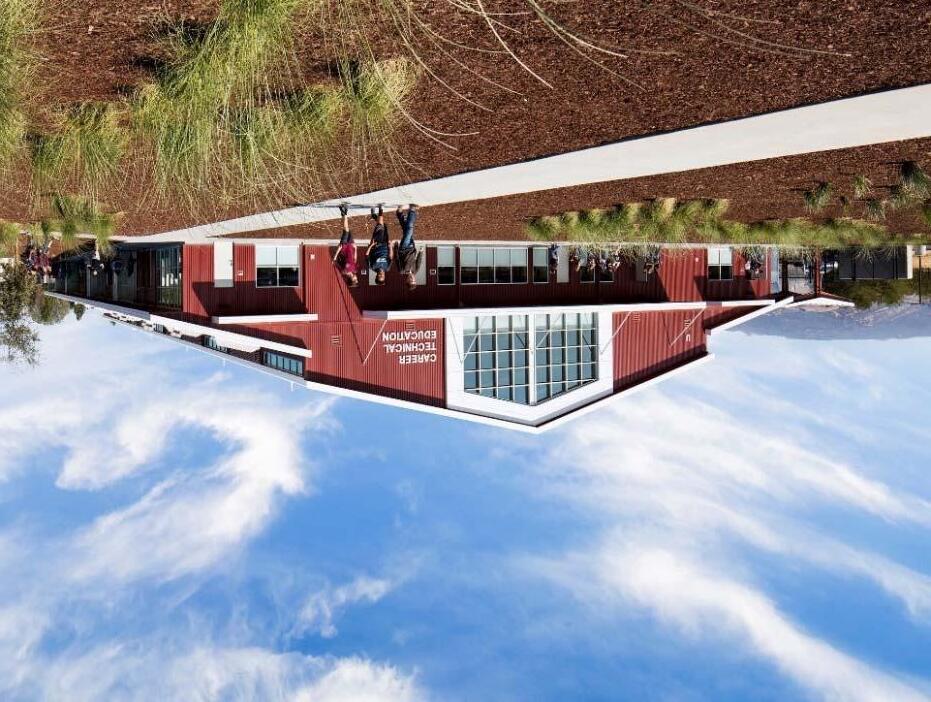

The District has completed the school facilities identified in the 2017 Revised FMP. In the Fall of 2022, the District added seven portable classrooms. The District is in the process of completing the final project from the 2017 Revised FMP – an 8,500 square foot cafeteria/multi-purpose room that will enable Hollister High to serve nutrition at a central location. The cafeteria is

being funded in large part by a $5 million state grant allocation in the 2023 State Budget, and District funds.

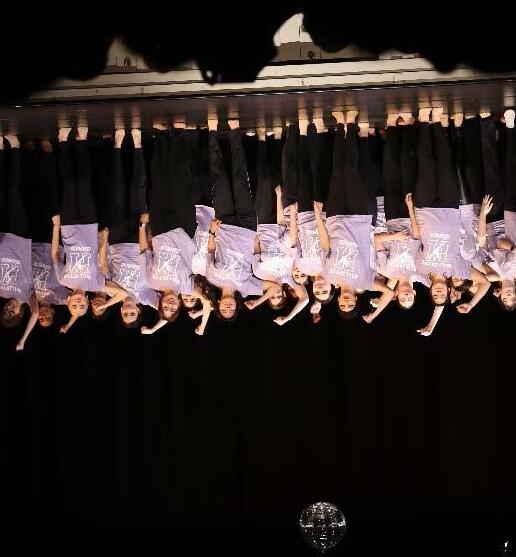




The existing cafeteria/ multi-purpose room was built in 1956 for 182 students.
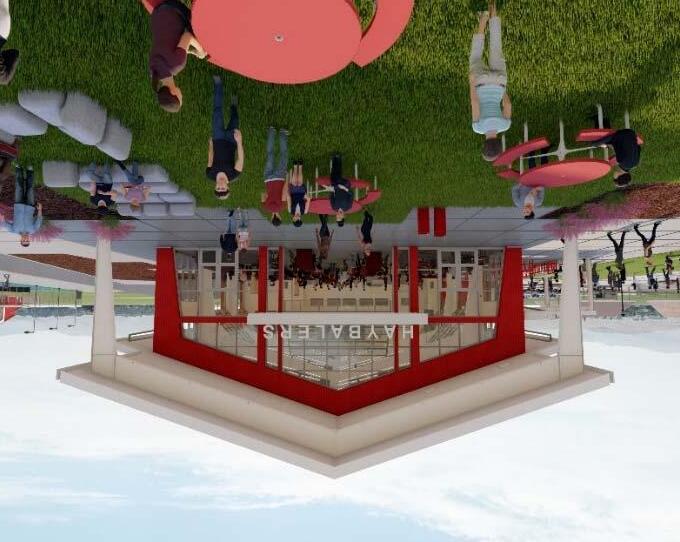



The District’s 2022-23 enrollment was 3,556 and is anticipating over 3,600 students for the 2023-24 school year based on preliminary registration figures. Enrollment has been steadily increasing since 2014, with the trend expected to continue. The District has been proactive in addressing student needs and creating a positive student-centered culture on the High School campus. However, being able to deliver high-quality education individually to students to promote student achievement and provide high quality curriculum to address specific student needs can be quite challenging in a large school. When planning for the future, the size of the current campus and the ability to serve even more students due to a growing student population is a driving factor in the type of capital improvements identified.


Since 2017 significant development has already occurred in San Benito County and is projected to continue into the foreseeable future. New development will result in even more students being served by the District. Growth in the County equals growth in the District.
"IT'S A GREAT DAY TO BE A BALER”




City of Hollister Active Development Projects
# of Units
Development
Remaining
2001 Memorial Drive28
375 4th Street51

435 San Benito Street5
4th Street Apartments17
500 San Benito Street12
851 Sunnyslope Road174
Chappell Road640
DAL Properties, LLC (Kramer Commons)90




Duets at Westfield (Kiper Homes)130
Eden Housing100
Farmstead13
Los Pinars60
Lynn Lake5
PAD Investment Trust (Everglen)82
Rosati (Avalon Village)144
San Juan Apartments Gateway157
San Juan Crossings, LLC140
San Juan Hollister Multi Family LLC76
South Street LLC14
Stewart Fahmy Project (Meridian Village)219
Stonebridge Homes100
West Gateway Condominiums84
West of Fairview481
Total2,822
San Benito County Active Development Projects

# of Units
Development
Remaining
Fairview Corners217
Hillcrest Road858
James Bray10

Land of Lee141
It is anticipated the District will continue to experience significant growth from new development. There are 32 different development projects currently identified within the County of San Benito and the City of Hollister. This will potentially result in an estimated 4,840 new units estimated over the next 10 years, as shown in the tables. The amount and timing of new development in the District’s attendance boundaries will directly impact the future student population. Projects identified in the tables include the estimated number of units remaining to be constructed. As the projects progress through the entitlement and development process, there will be adjustments to these figures. For the purposes of this FMP, the maximum number of allowable units for each project is identified.
Lico and Greco (Vista del Calabria)149
Ridgemark Subdivision (Wynn)195
Santana Ranch318
Spring Meadows Estates40
The Bluffs, Promontory at Ridgemark90
Total2,018
With an anticipated 4,840 NEW HOUSING UNITS, the District cannot accommodate students from new development given the existing size of Hollister High School. These future housing units will have a significant impact on the District. The District has worked collaboratively with the City of Hollister, County of San Benito, business
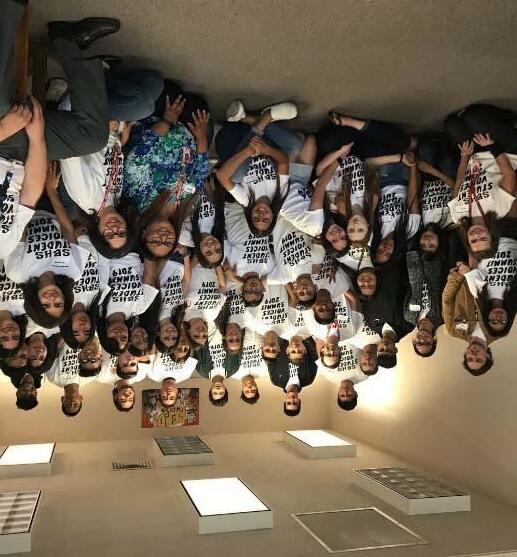
community, building industry and residents to ensure the delivery of high school facilities to serve the needs of the District now and into the future.
The City of Hollister is in the process of updating its General Plan. The Draft General Plan projects 6,455 new housing units, 1.1 million square feet of new commercial and office space and 2.8 million of new industrial space. The planned development will generate approximately 21,635 new residents and 5,755 new jobs by 2040. The District worked with the General Plan Advisory Committee and City on adopting policies that are supportive of schools to help address infrastructure needs caused by development. The District continues to be involved in the process. Highlights of the Draft General Plan that relate to funding adequate school facilities include the following policies:
Policy CSF-1.3: Infrastructure Planning. Require the preparation of a specific plan, financing plan, development agreement, creation of Communities Facilities District, or another similar document or financing vehicle, as a pre-condition to annexation or redesignations of land for new urban use.
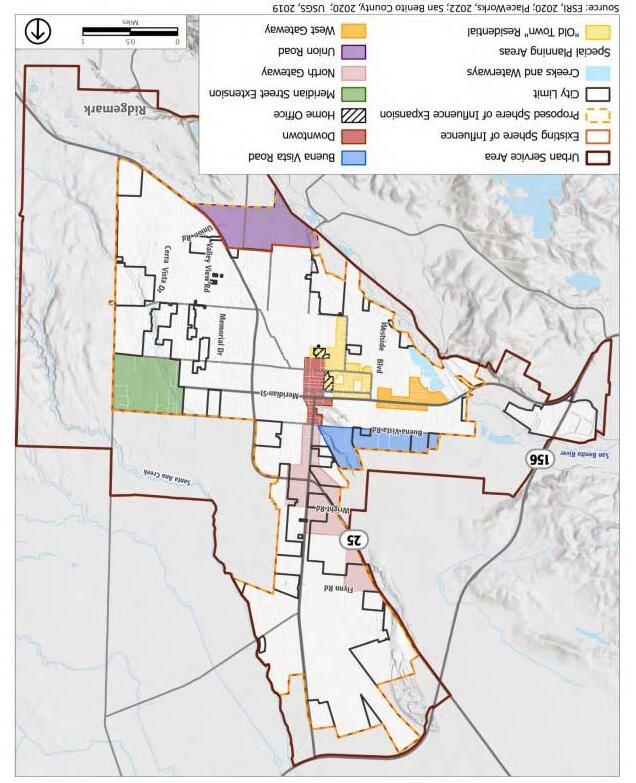
The plans shall identify means to ensure adequate funding to support construction of all needed public facilities, including water, sewer, storm drainage, roads, sidewalks, parks, and school facilities.
Policy CSF-1.4: Development Review Criteria for Public Services. Prior to granting approval, evaluate each new development in terms of the following criteria:
The project shall be adequately served by infrastructure (e.g., water, sewer, streets, schools, parks), which is already in place or mitigated.
The project shall be within the existing service areas of local service providers (i.e., fire protection, police protections, solid waste disposal, schools), and not result in a reduction in their current capabilities.
There shall be adequate elementary, middle, and high schools to serve the proposed project.
Policy CSF-7.1: New school Funding Incentives. Consider incentives, such as density bonuses and waiver or reductions of development standards, when a proposed project voluntarily provides school fee contributions beyond their fair share for new school facilities.
Policy CSF-7.2: Coordination with School Districts. Encourage joint planning with local school districts in determining the location of educational facilities.

Policy CSF-7.3: School Development Impact Fees. Require all new development to mitigate its fair share of the impact of such development on school facilities to the maximum extent permitted under state law.
Policy CSF-7.4: Community Use of School Facilities. Collaborate with schools to enter into joint-use agreements to provide access to school facilities for neighborhood, community, and recreational activities.

Policy CSF-7.5: Construction of a Second High School. Support the San Benito high School District’s efforts to construct a second high school.
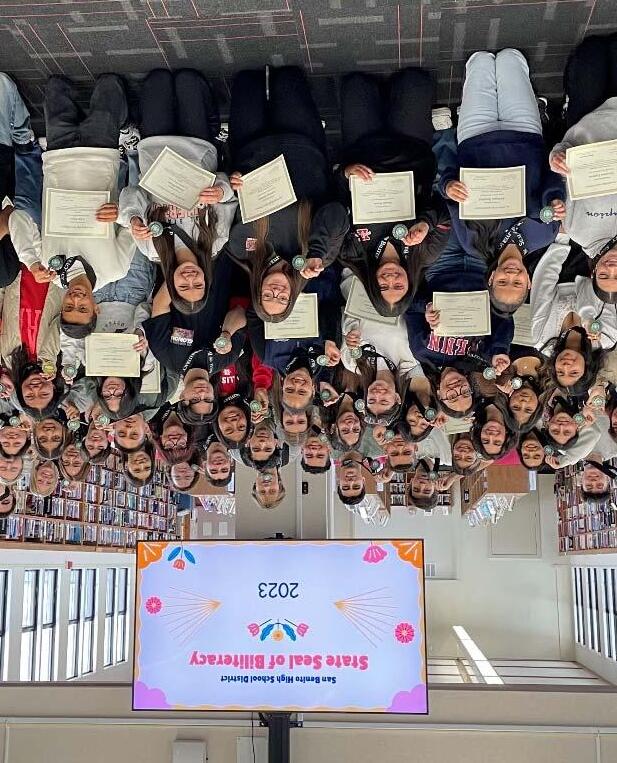
To estimate the impact of new development on a school district, student generation rates are utilized. Student generation rates are the estimated number of students that reside in new homes constructed within the District and need to be accommodated in school facilities.
To better identify the number of students per home locally, in 2020, the District commissioned a study from School Facility Consultants to conduct a 10-year student generation rate to determine the number of new students generated per new home at peak generation. The study concluded that for every 100 single family homes built in 2010, 35 new students arrived at the high school in 2020. This rate is greater than the state average of 20 new high school students per 100 homes. With recent and projected residential growth, a second high school is necessary.
The District does not necessarily see peak generation from each new home constructed until several years after the home is built.
For homes built in 2009 and 2011 (9-11 years earlier), approximately 0.35 students per home were attending High School in 2020.

Homes built more recently show generation rates between 0.167 and 0.273 depending on housing types.
Based on historical trends, the student generation from those homes will likely increase over the next several years.
The District must develop a plan to accommodate all students when enrollment is at its peak.
The timing of when these students arrive at the high school campus is completely dependent on the pace of development and how long after a home is built that students living in the home will attend high school.
These anticipated 1,694 students from future new housing units, combined with the students from housing units constructed over the past 10 years make up the total anticipated students from new development in the growing community. These figures add to the existing student population, which is the basis for determining the school facilities needed to accommodate total student enrollment.
Estimated Students from Future Development
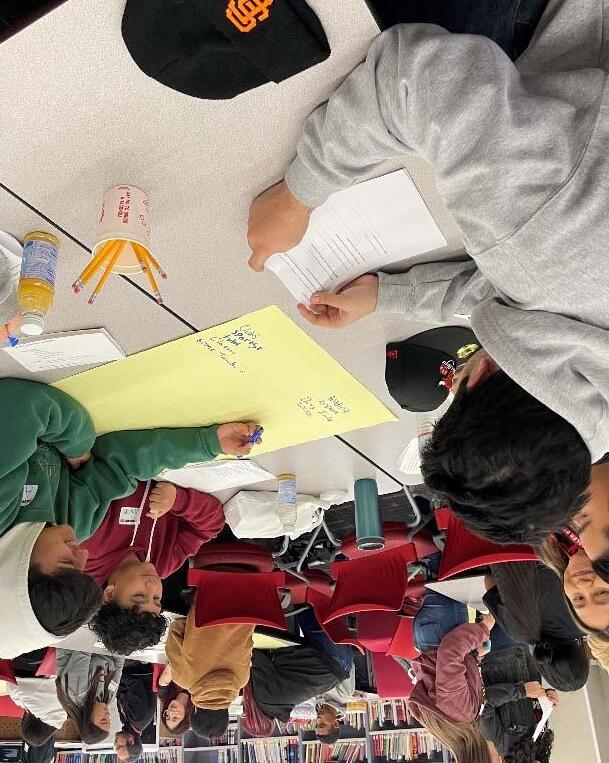
Estimated Future Housing Units4,840

Peak Student Generation Rate0.35
Estimated Students from Future Housing Units1,694
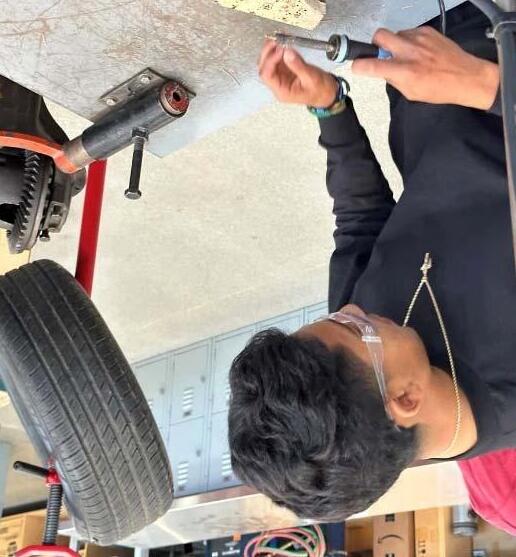


The anticipated students from new development are only one component of the anticipated future student population. There are students already attending Kindergarten through 8th grade that will eventually matriculate to Hollister High School, regardless of the students generated from homes yet to be built.


Projections for future enrollment occur on both a shortterm and long-term basis. In the short-term, enrollment is projected based on historical enrollment trends depicting students moving through the grade levels. In the long-term, student generation rates can be applied to anticipated new housing units to project the number of new classrooms/ schools needed to house future students as new development occurs. Of the 3,556 students in the District in 2022-23, 3,465 were attending Hollister High School with the remaining students attending San Andreas High School. Projected enrollment figures can be compared to the capacity of the High School to determine approximately when new capacity will be needed. With the cohort survival method, which projects students moving through the grade levels, the District can expect a continued increase in enrollment based on students enrolled in Hollister High School combined with students of the local elementary districts that will move to the High School. In addition, approximately 428 of the 535 students from new development identified in the 2023 SFNA are projected to add to enrollment numbers. District enrollment is projected to increase to 3,902 students by 2026-27.

The average American high school has 850 students. With 3,465 students, Hollister High School is the third largest high school in Northern California. Most high school districts have flexibility to accommodate high school students because they have multiple high schools and middle schools that provide school boards with the opportunity to adjust attendance boundaries and reconfigure grade levels. San Benito High School District is limited in its ability to accommodate students because it only has one comprehensive high school.
Norhtern California Largest Enrollments - High School


NorCal
RankCounty DistrictSchool



2022-23 Enrollment

1AlamedaDublin UnifiedDublin High3,500
2Contra CostaPittsburg UnifiedPittsburg Senior High3,494
3San BenitoSan Benito HighHollister High3,465
4AlamedaNew Haven UnifiedJames Logan High3,315
5Contra CostaSan Ramon Valley UnifiedDougherty Valley High3,255
6AlamedaBerkeley UnifiedBerkeley High3,204
7Santa ClaraMilpitas UnifiedMilpitas High3,026
8FresnoClovis UnifiedClovis High2,905
9FresnoFresno UnifiedSunnyside High2,879
10Contra CostaSan Ramon Valley UnifiedCalifornia High2,879
11MontereySalinas Union HighAlisal High2,852
12FresnoSanger UnifiedSanger High2,734
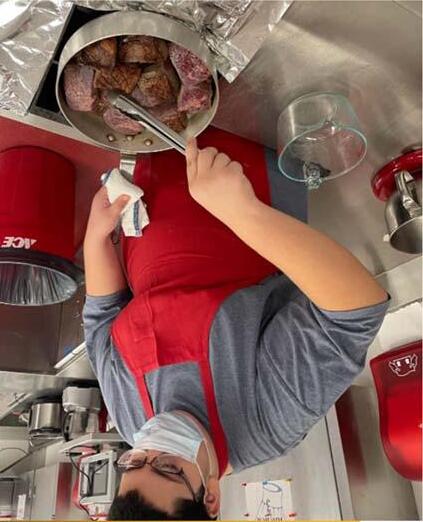
Available Capacity of Hollister High Sc hool
2023 School Capacity3,437



2023 Enrollment3,465 Over Capacity28
2023-24 Projected Enrollment3,596 Over Capacity159
Hollister High School has a current capacity of 3,437, based on the number of classrooms available to educate students, as determined by the Office of Public School Construction for the State funding program. The operating school capacity may be slightly different to the extent that classrooms are loaded at different rates than set forth in the State funding program. Based on the 2022-23 CBEDs enrollment of 3,465, the High School is operating just over capacity by 28 students. The High School will be over capacity by 159 students based on 2023-24 projected enrollment. Over the next four years, the District’s enrollment is expected to increase to approximately 3,902 students and will continue to grow as new development continues within the District. New facilities will be needed to accommodate the anticipated additional students. "IT'S A GREAT DAY TO BE A BALER”

As student enrollment increases due to future housing development, there will be a great need for additional capacity. An estimated 1,694 students beyond the students already attending local schools are projected from future housing development. There are essentially two ways for the District to add this capacity:
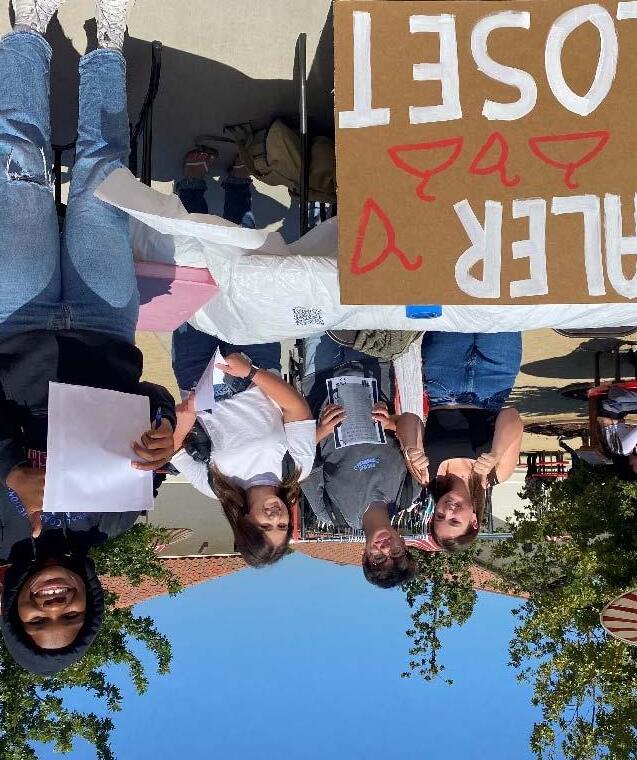
1) Add classroom buildings and expand support facilities on the Hollister High School campus, or
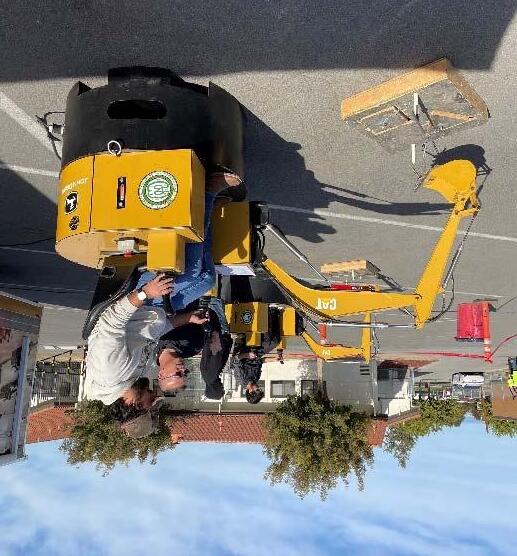
2) Construct a new, smaller high school to accommodate future students.
The District has to consider a decision that ultimately serves to promote student achievement goals, while maintaining fiscal responsibility and putting the community’s future ahead of less expensive and quicker temporary solutions. As such, staff evaluated the possibility of expanding the High School from both an educational program and facilities perspective. It has been concluded that from both perspectives, the expansion of Hollister High School is simply not a viable or financially prudent solution.
Accommodating the future student population on one high school campus would require significant additions to the current school. The campus would not only need additional classrooms but also significant reconfiguration/expansion of support spaces. The construction of the Multi-Purpose and Kitchen building identified in the District’s 2017 revised FMP will begin in the Fall of 2023. Also, additional restrooms to accommodate such a large student population are necessary.
Although the idea of an expansion may be conceptually feasible from conceptual perspective, from an educational program perspective, Hollister High School would become the largest non-charter high school in the State, with over 5,000 students (if students from new enrollment are added to the estimated peak student enrollment of 3,902). The District would face challenges in providing an environment conducive to meeting the needs of students and the
community. Although this may be a more cost-effective option, from an academic perspective, this option is not a reasonable solution for the future. Also, the overall student climate is a huge consideration as we look at less availability to participate in athletics, arts, clubs and CTE pathways for all students.





Adding to an already enormous site is no easy measure. There is also a concern about where on the campus an expansion could even occur. Hollister High School has been masterfully planned with buildings designed to flow through the campus while maximizing available spaces. A large hurdle to an expansion of this magnitude will be where to place the additional classrooms and any additional support spaces that may be required by the California Department of Education. As shown on the photos below, the 63-acre site is quite impacted, lacking space for significant expansion.
An expansion of the campus would require additional classroom space and improvements to support facilities. Based on the ultimate size of the expanded campus, and the challenges in being able to physically accommodate such an expansion, as well as the ultimate capital cost. In October of 2022 the District formed a Facilities Needs Committee to explore the need for a second high school.
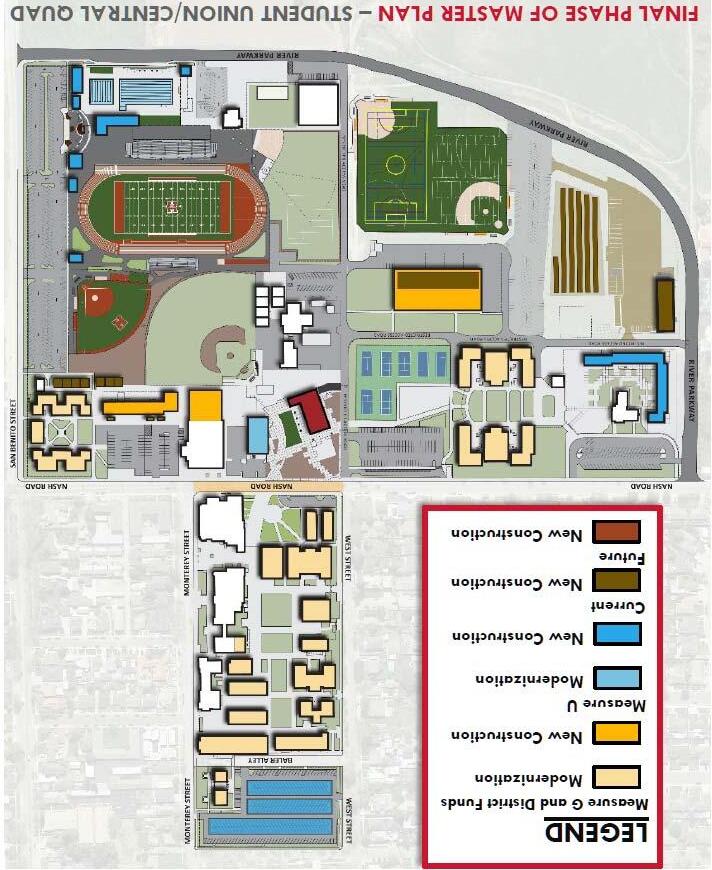
"IT'S A GREAT DAY TO BE A




October 26, 2022
Meeting #1: Introduction and Background
November 30, 2022
January 21, 2023
March 1, 2021
Meeting #2: School Construction Funding and the Site Selection Process
Meeting #3: Vision for a Second high School and Campus Tour
Meeting #4: Vision for a Second high School
March 22, 2023
Meeting #5: Educational Program Drives School Facilities

In May 2023, the Facilities Needs Committee (FNC), composed of 65 community members, staff members, and students, presented its recommendations to the San Benito High School District Board of Trustees regarding a second high school within the District.
April 12, 2023
Meeting #6: Facility Components of the Second high School

April 26, 2023
Meeting #7: Develop Findings and Recommendations
May 23, 2023
Meeting #8: Facilities Needs Committee Findings and Recommendations

The report noted that funding should come from a variety of sources, including development, state funds, and a general obligation bond.
The FNC found that educational and co-curricular programs offered at the second high school should have unique opportunities and enhance those offered at Hollister High School. The second high school should provide students with a variety of educational options, including dual enrollment and academies that provide hands-on learning opportunities to prepare students for college and/or high demand, high-wage jobs. The committee also recommended that the second high school include “necessary facilities” including: general classrooms, science labs, administrative space, library, cafeteria/multi-purpose room, PE fields, locker rooms and a gymnasium. An order of priority for recommended facilities was offered.


The San Benito High School District believes that college and career readiness will provide its students with the knowledge, skills, and character to be successful in post-secondary education and/or training that leads to gainful employment. The second high school will include A-G graduation pathways including math, English, science, language, physical education, CTE and visual and academic performing arts. The second high school will also offer career technical education designed to connect high school students to college, industry certifications, and a career. The second high school will encompass high quality classrooms and equipment that are on par with industry standards, and will engage TK-12 education, post-secondary education, and industry partners. CTE programs will include work-based learning that will allow students to interact with industry professionals to get first-hand experience.

“No matter your career path, the San Benito High School District will get you there.”
"IT'S A GREAT DAY TO BE A BALER”
The Facilities Needs Committee reviewed the educational programs for a second high school. This included potential “Academy” options and a discussion on how academies and other programs could be offered, including dual enrollment. The academies were prioritized based on industry sectors.
The FNC discussed facility components to be included in the second high school, including a prioritization of the facility components.
Facility
1Specialized Classrooms - CTE28.35%
2Collaborative Spaces/Common Are a 27.63%
3Outdoor Learning Environments17.13%

4Specialized Classrooms - Arts10.13%
5Performing Arts Center/Theater8.98%

6Enhanced Athletic Fields5.14%
7Stadium1.89%
8Aquatic Center0.74% 100%
1Information and Communication and Technologies441

2Health Science and Medical Technology321


3Energy, Environment, and Utilities123

4Building and Construction Trades203
5Arts, Media, and Entertainment111
6Education, Child Development, and Family Services012

7Engineering and Architecture100
8Marketing, Sales, and Services010
9Manufacturing and Product Development010
10Agriculture and Natural Resources001
11Hospitality, Tourism, and Recreation000

12Transportation000
13Fashion and Interior Design000
14Public Services000
15Business and Finance000
The construction of a new high school is the only manageable solution to meet the needs of a growing community. A new campus could be designed for flexibility with regards to the timing of future student enrollment. The school would initially be designed and constructed to serve 1,200-1,400 students with the ability to expand to up to 2,400 students. The District would have some flexibility with respect to the essential programming offered at the second high school and may consider creating special programs or learning academies. The facilities could be specifically designed with these types of programs in mind.
Estimated
ProjectCostsNotes

Approximately 50 acres
Estimate $500,000 per acre for site development
Estimate $650-$850/sq. ft. construction cost


Soft Costs$34,195,600Estimate 20% of construction costs
Furniture, Fixtures & Equipment $5,129,340Estimate 3.0% of construction costs
TotalEstimatedCosts$220,302,940
Based on the cost of similar projects, the construction of a second high school for 1,2001,400 students is estimated to cost approximately $220 million, in today’s dollars. On average, California construction costs have increased by 6% per year. Construction cost escalation over the past year has well exceeded the 6% historical average. The estimated project costs from the 2022 FMP have been increased by 6%. The longer the District waits to construct a second high school, the more costly it will be.
The conceptual second high school plan includes 45 classrooms, science, art, and music classrooms, as well as a gymnasium, library, cafeteria/kitchen, administration, performing arts building, and practice fields. Phase 1 of the second high school would not include a full stadium and pool.



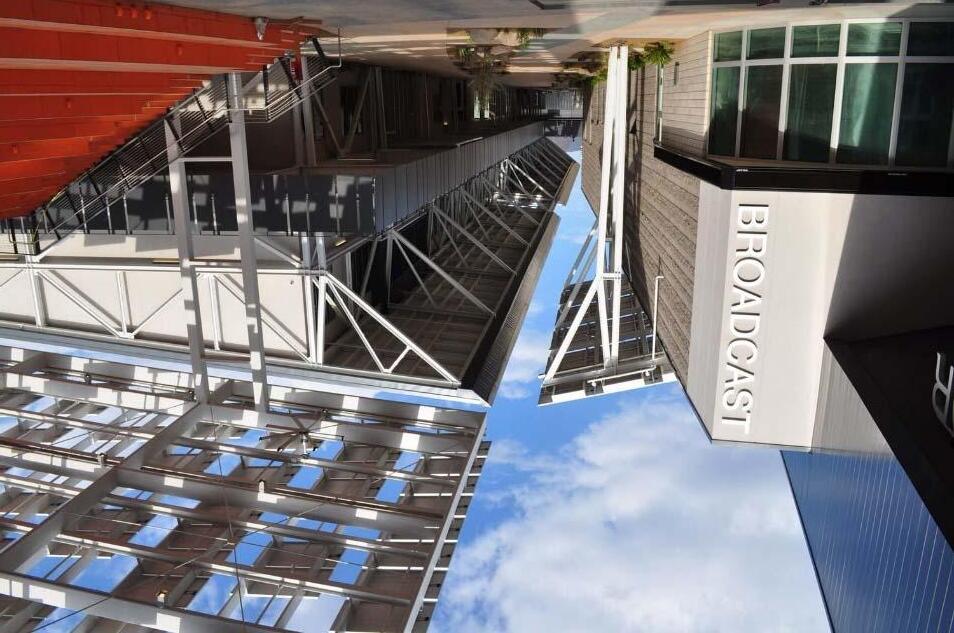


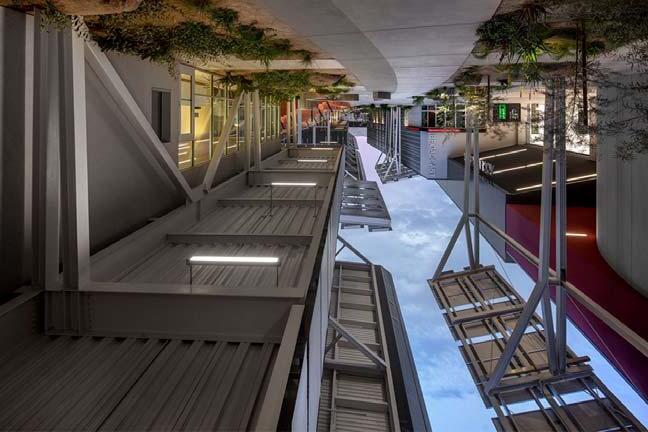















The Board of Trustees and the Facilities Needs Committee have evaluated the existing student population; the locations of future developments and planning areas; and projections of where future students would likely originate from. The District is also considering the locations of Hollister High School, elementary schools, Gavilan College and the Best Road site.
The District Administration is evaluating several potential sites and plans to bring recommendations to the Board during Fiscal Year 2023-24. "IT'S A GREAT DAY

The Facilities Needs Committee ranked factors in selecting the location of a school site. The table shows the factors the District will consider.
The Committee also recommended joint-use of facilities either with Hollister High School, Gavilan College, or other community facilities that could be shared with the second high school. Regardless of where the second high school is located, the Board of Trustees is committed to providing all students with equal access to high quality academic and career technical education opportunities for all students.
School Site Factor Ranking

RankFactorScore
1Location as Compared to Targeted Student Population30
2Equity between Campuses23

3Health and Safety16

4Cost15
5Layout of School Buildings and Facilities11
6Location with Consideration of Ability to Share Facilities9
7Site Configuration5
8Site Size2






A combination of funding sources will be necessary to complete future projects, and State of California funding for capital projects has become increasingly difficult to rely on. Typically, school districts in California use a combination of the following sources to fund capital needs:
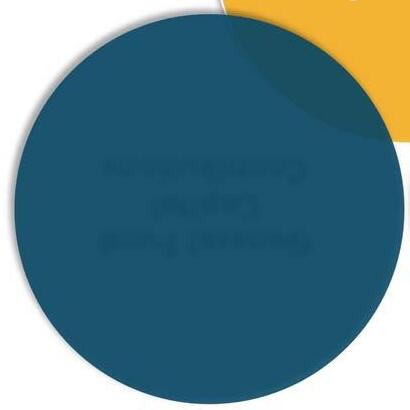


Developer/ Mitigation Fees
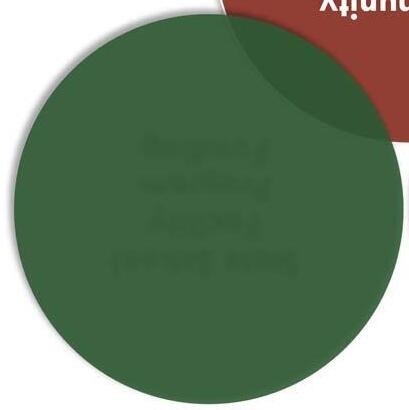
State School Facility Program Funding


General Fund
Capital
Contributions
Community Facilities
Districts
Bonds/Taxes
General Obligation
Bonds

California law allows for the levy of fees on new development where a school district will be impacted. This is called a developer fee. Fees levied on residential and commercial development may be used to construct or reconstruct school facilities for the students generated or anticipated to be generated as a result of this development.
Development fees are based on a formula defined by the State with the maximum Level I fee being updated bi-annually by the State Allocation Board. However, some districts are justified in collecting a higher fee, called Level II developer fees, through the process of a School Facility Needs Analysis (“SFNA”).
The District expects to collect Level II Developer Fees of $3.48 per square foot, to be justified in their 2023
School Facility Needs Analysis (SFNA). This fee is calculated based on State-wide formulas for school construction costs combined with a limited calculation of student generation rates – only accounting for students generated from homes constructed over the past 5 years and not considering how long it may take students to be generated from those homes.
The example above assumes developer fees from all known developments. The timing of the developments is unknown. It is clearly evident that developer fees will not be sufficient to fund the construction of a second high school. As such, it is important for the District to pursue alternative mitigation measures, in the form of enhanced mitigation fees or the formation of Community Facilities Districts (described below) to increase the amount of funding for the second high school.

Under the Mello-Roos Community Facilities Act of 1982, public agencies may form a special tax district (also known as a Community Facilities District, or “CFD”) to fund capital improvements with a useful life of five years or longer. To approve a special tax and issue bonds, a CFD requires two-thirds voter approval, except in developing areas where there are less than twelve registered voters. Then for approval, a landowner vote is required, based on the number of acres owned. This landowner vote provision makes this a useful tool for development mitigation. There is a lot of flexibility to a CFD and many of the components can be customized to the District and/or developer utilizing the funding mechanism. The boundaries of a CFD are flexible; they must simply be within the jurisdiction of the public agency forming the CFD. Elections can be held at any time. The tax formula is flexible, District-driven, and can consider property characteristics such as square footage of a home and parcel size. The only restriction on the tax formula is that it cannot be based on value of the property. Property owners within a CFD are responsible for payment of the special tax on their annual property tax bill. The tax revenue can be bonded against as a loan and repaid from future special tax collections or simply used on an ongoing basis.
A CFD could be used as a tool for the District to obtain additional mitigation funding from new development to fund the cost of school expansion and new construction. The District could consider forming its own CFD(s) or joining a pooled CFD program.
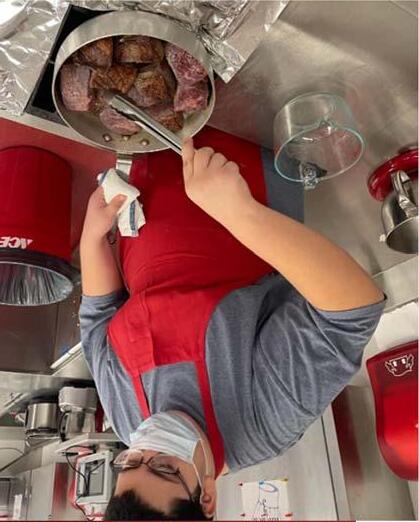

Developers can also utilize CFD’s to finance developer fees. The California Municipal Finance Authority (CMFA) has established the Bond Opportunities for Land Development or “BOLD” Program. In May 2023, the District adopted the BOLD program to offer developers and homebuilders the opportunity to advance fund developer fees through the issuance of CFD bonds. The BOLD program only applies to property owners who wish to participate in the program.
By using a CFD to finance developer fees, the District can negotiate developer fees above the current developer fee amount. Additionally, participating developers and homebuilders can deliver developer fee revenue to the District before pulling a building permit.

The State School Facility Program (SFP) is a funding program whereby the State provides matching funds to school districts embarking on eligible construction projects. The State School Facility Program is funded through statewide general obligation bonds. In November 2016, California voters approved Proposition 51 authorizing $9 billion of funding, however a March 2020 State-wide bond measure was not successful. All of the $9 billion from Proposition 51 has already been allocated to projects, and the State has created waitlists for projects submitted after the Proposition 51 allocation was exhausted. To receive funding, these projects will need future State bond approval by California voters.
While there is no Statewide bond at this time, there is a proposal for a new Statewide bond to be placed on the ballot in November of 2024 for additional school facility funds. While we cannot foresee changes to the funding formulas or requirements of the State program with future State bonds, we can look at past programs and base our assumptions accordingly.
Under the SFP, there are different programs in which projects can qualify for funding, however there are two main categories that construction falls into: New Construction and Modernization funding.
The State provides funding assistance to school districts for the modernization of school facilities. The assistance is in the form of grants and requires a 40 percent district funding contribution. A district is eligible for modernization grants when students are housed in permanent buildings that are 25 years old or older and relocatable classrooms that are 20 years old or older, and the buildings have not been previously modernized with State Funds. To receive funding, the district must also show that there are pupils assigned to the site who will use the facilities to be modernized. If the facility is currently unused, such as a closed school, it may also be eligible for modernization funding if the district intends to reopen it for students immediately.
The modernization grant can be used to fund a large variety of work at an eligible school site. Air conditioning, insulation, roof replacement, as well as the purchase of new furniture and equipment, are just a few of the eligible expenditures of modernization grants. A district may even use the grants to demolish and replace existing facilities of like kind. However, modernization funding may not be spent for construction of a new facility.
"IT'S A GREAT DAY TO BE A BALER”




New construction funding is available for school districts whose existing capacity is insufficient to house the existing students or those students anticipated within the district, based on a five-year enrollment projection.

After a district has established eligibility for a project, the district may request funding for eligible project costs. The funding for new construction projects is provided in the form of grants. The grants are made up of a new construction grant, also known as a pupil grant and a number of supplemental grants. The new construction grant is intended to fund design, construction, testing, inspection, furniture and equipment, and other costs closely related to the actual construction of the school buildings. This amount is specified in law based on the grade level of the pupils served. Supplemental grants are special grants and are intended to recognize unique types of projects, geographic locations, and special project needs.
Each new construction project is reviewed, and appropriate grants are allotted by the Office of Public School Construction (OPSC). All new construction grants must be matched equally by the district with local funding sources. Once the grants are determined for a project, a request is sent to the State Allocation Board (SAB) for a funding apportionment. State funding will be subject to eligibility re-justification.
As previously stated, the future of the SFP is uncertain. However, for illustrative purposes, if the current requirements and funding guidelines are applied, the District could receive the estimated amounts from the State for a future high school campus construction:

The District has a history of actively applying for, and receiving, State funding for both Modernization and New Construction. Since 2003, the District has received approximately $45.6 million in grant apportionments from the State to go towards facility improvement projects and new construction. Most recently the District secured $8 million of State grants for the Science & Robotics Building.
Of the amounts received to date from the State School Facility Program, the District received $36 million of State funding since 2018. This State funding was made possible through the passage of Measures G & U. The District will continue to actively apply for State funding for any eligible future projects.
Currently, the District has applications submitted to the State for six additional projects, estimated to provide up to $11.58 million in State funding. If funded, the District plans on allocating $5 million to fund the second high school and $6.58 million to fund interim facilities. As stated above, state funding for new construction will be subject to eligibility requirements prior to the release of state matching funds.
New Construction
$13,290,582




Modernization
$17,064,378
2018-2022 Funding Total: $36,015,578
Facility Hardship
$5,660,618

General Obligation Bonds (“GO Bonds”) are repaid from an ad valorem tax levy on property within the District’s boundaries. The maximum amount of GO Bonds that can be outstanding at any one time is limited to 1.25% of a high school district’s assessed value. This is referred to as a district’s legal “bonding capacity”. GO Bonds must be approved by voters within the District. The timing of the elections for GO Bonds depends upon the authority under which the bonds are to be approved.
GO Bond funds may be used for construction, rehabilitation, equipping of school facilities, or the acquisition or lease of real property for school facilities. The bond measure requires a specific list of school projects to be funded and certification that the school board has evaluated safety, class size reduction, and information technology needs in developing the list. Finally, there is a requirement that an oversight committee review expenditures and the school board conduct annual, independent financial and performance audits until all bond funds have been spent to ensure that the bond funds have been used only for the projects listed in the measure.
In addition to the bonding capacity restriction, bonds authorized under Proposition 39 (2000) require that the tax rate levied as the result of any single election can be no more than $30 per $100,000 of assessed value, for a high school district.
Election dates for a Proposition 39 Bond election are limited to: (1) statewide primary or general elections; (2) regularly scheduled local elections; or (3) statewide special elections. Statewide election dates only occur in June and November in even-numbered years. Therefore, except in the case of a special statewide election (which can only be called by the Governor), districts may only hold Proposition 39 Bond elections on regularly scheduled local election dates and statewide elections held in June and November of even-numbered years.
The District successfully passed two bond measures, totaling $102.5 million, over the past 8 years - Measures G ($42.5 million) and U ($60 million) - that were used to expand and modernize the Hollister High School campus.








The State school funding system is designed to provide school districts with a minimum level of funding per student. The current State funding model is called the “Local Control Funding Formula.” The State funds the annual operating expenses of the California school districts based on the number of students attending district schools and the number of high need students in the district. The amount of State funding received by each school district equals the difference between the entitlement calculated through the Local Control Funding Formula and the District’s share of locally collected property taxes. The State backfills the difference between its state funding entitlement and the amount of property taxes allocated to the District. State funding for operations is not a substantial revenue source for facilities. Approximately 81% of the operating funds are spent on employee salaries and benefits. The remaining 19% of the revenues are spent on books, supplies, services, and other operating expenses.




The District can, however, utilize its General Fund as a legal pledge for ongoing debt payments. The most common financing mechanism for non-voter approved debt is tax-exempt leasing also known as Certificates of Participation (“COPs”). Another common lease financing mechanism is called a Lease-Revenue Bond. They are exempt from the voter approval requirement when structured as a contingent liability such as a lease. Essentially, the district pledges its General Fund while intending to utilize developer fees and state funding as the repayment source. Due to uncertainties regarding the timing of developer fees and State funding, the General Fund is needed to secure the loan. COPs and lease-revenue bonds can be used as a short term “bridge” financing or a long-term financing.
In 2019, the District utilized a $19.7 million Lease-Revenue Bond as a bridge financing to advance State funding for the Science and Robotics Building and other capital projects. In 2021, the Lease Revenue Bond was repaid from the receipt of State Funds. This avoided escalating construction costs on the building and saved over $900,000 of interest on the loan.
Going forward the District will be responsible for advance funding developer fees and state funding as these sources of funds are received over time.
Of all the funding sources previously described, there are only two sources that the District can reasonably expect to be available for the construction of a second high school. As demonstrated in the previous chart, with the same 4,840 units of development, the District would receive approximately $75 million from a combination of developer fees and potential State funding related to the second high school. The District plans on contributing an additional $5 million from State funding applications previously submitted, leaving approximately $140 million to be locally funded.

"IT'S A GREAT DAY TO BE A BALER”


Funding a second high school will require the utilization of multiple funding sources, including: developer/mitigation fees, CFD bonds and taxes, GO bonds, and State funding. The District will need to work in conjunction with the local land use agencies, namely the County of San Benito and City of Hollister, and local real estate developers to come to agreement on enhanced mitigation measures and obtain support for pursuing a local GO bond measure.
The Facilities Needs Committee recommends that the District should explore joint use partnerships with other local agencies or organizations (e.g., community college, city, county, etc.) to reduce costs and create opportunities for students. The District should also consider opportunities for grants, private donations, corporate philanthropy/partnerships, community foundations, banking institutions, and funding from the Federal Government.
The second high school will require funding of approximately $220 million, in today’s dollars. An estimated $28.3 million will be generated in Level II developer fees and an additional $46.4 million can be estimated from the State. The District will contribute $5 million towards the second high school. The local funding requirement will be approximately $140 million. A portion of this unfunded cost may be made up from enhanced mitigation, such as the formation of a CFD. The remaining cost would need to be funded through general obligation bond measures.
A scenario of two Prop. 39 bond measures with a combined tax rate of approximately $50/$100,000 of assessed value would provide the local share for the second high school.

The District has a track record of maximizing its local funding and minimizing debt service costs on its Measure G (Election of 2014) and Measure U (Election of 2016) General Obligation Bonds. Highlights of the bond program include:
In 2017, the District’s credit rating was upgraded from “A1” to “AA3”.


Reduced the combined number of bond sales from 8 to 4, which shortened the overall borrowing term by 5 years.
In 2021, the District refinanced general obligation bonds resulting in $1.7 million in debt service savings to taxpayers.

In 2023-24, the combined Measure G & U tax rate is $42 per $100,000 of assessed valuation, which is $1.60 less than 20222023 and 30% below the $60 estimate.
Additionally, the District has saved over $1.5 million in reduced energy conservation through its solar generation.

The District maintains fiscal transparency and accountability through compliance of local controls and State and Federal laws, and by annually reporting to the Board of Trustees debts issued by the District, including information on actual and projected tax rates, an analysis of bonding capacity, ratings on the District's bonds, market updates and refunding opportunities, new developments for bond financings. The District's accountability requirements are shown below.
•Citizens Oversight Committee
•Debt Management Policy
•Annual Debt Report
•Bond Fund Audits



Controls
•Annual Debt Transparency Report

Reporting

•Compliance with federal securities laws
•Annual financial market disclosures

Over the course of the last several years, the District has embarked on a mission of “One Community” to greatly increase the collaboration and capacity to work together. The District has made substantial progress in building a community partnership with students and families, businesses, service organizations, land developers, homebuilders, schools, City and County governments. Our community partnerships directly impacts the quality of education the District offers. A June 2023 survey indicated that 62% of our community now has a positive opinion of the quality of education, a 10% increase over the 2016 survey. Among K-12 parents, 68% have a positive opinion of the quality of education provided by the District.
Student capacity is becoming too large to sustain the quality of education of our students. Without a second high school, meeting the needs of our students may be substantially diminished by having overcrowded classrooms, common areas, and congestion causing depleted educational programs and student safety concerns. This may negatively impact home values.
Our Facilities Needs Committee found that a second high school is necessary to meet and exceed the academic and career technical education opportunities for our students in a safe educational environment. The FNC recommended that the community continue to be consulted about the District’s planning for the second high. The District looks forward to building on its mission of “One Community” by educating and building relationships with community members.
1. Acquire a site for a second high school.
2. Construct a second high school to serve students from new development.
3. Continue to educate the local land use agencies (County of San Benito and City of Hollister) about the facilities capacity and funding challenges facing the District.
4. Negotiate with local real estate developers to aid in funding the school facilities needed to accommodate the future student population.
5. Pursue joint-use opportunities with the City and County and Dual Enrollment with Gavilan College.
6. Apply for State funding, as available, to leverage local funding for all eligible projects.





7. Pursue a future GO Bond measure to fund a portion of a second high school.
8. Maximize financial resources to meet the needs of the community.
9. Continue our efforts to deliver a high-quality education in a safe environment.
San Benito High School District Completed Projects